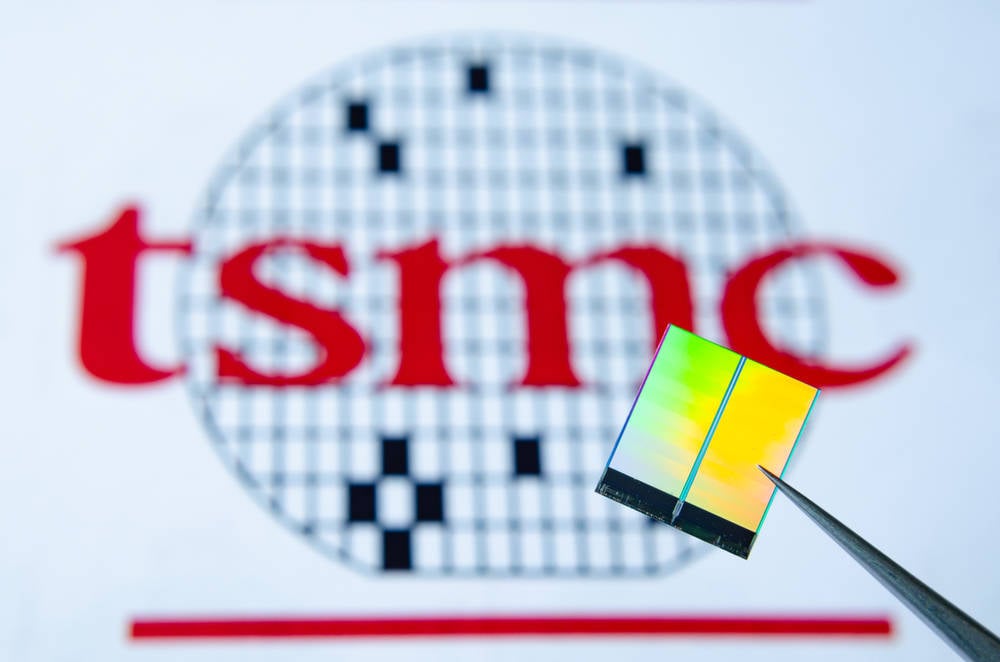World's Largest Chipmaker TSMC's Sales Down On Last Year, Says Upswing 'coming'

TSMC has posted another double-digit year-on-year revenue drop, yet is again banking on a pick up in the near future in what is virtually a re-run of the chipmaker's financial results for the previous quarter.
The Taiwanese biz reported revenue in US dollars for calendar Q3 of $17.28 billion, a decrease of 14.6 percent compared with the same period last year, but up 10.2 percent quarter-on-quarter.
To put this in perspective, TSMC was riding high this time last year with revenue up a whopping 47.9 percent, and the entire semiconductor market has since been hit by a downturn in demand caused by surging inflation and customers choosing to use up excess inventory before committing to further orders.
It does mean that the world's largest semiconductor contract manufacturer is once again forecasting that market conditions will be kinder in the next quarter, which is what the company's VP and CFO Wendell Huang said in the last earnings call.
And once again, TSMC seems to have beaten some analysts' forecasts with this latest set of results, with revenue towards the upper end of its own estimates.
TSMC offered some indications the semiconductor industry's rough year may be coming to an end, with chief exec CC Wei saying he believed the industry was close to the bottom, and there are "early signs of improvement" in demand from sectors including smartphones and PCs.
In terms of silicon output during Q3, advanced technologies - meaning those producing using a 7nm production node or smaller - accounted for 59 percent of TSMC's total wafer revenue.
Breaking that down, TSMC said its 3nm process tech made up 6 percent of wafer revenue, while 5nm accounted for 37 percent during the quarter, and 7nm was at 16 percent.
"Our third quarter business was supported by the strong ramp of our industry-leading 3-nanometer technology and higher demand for 5-nanometer technologies, partially offset by customers' ongoing inventory adjustment," said Huang.
In terms of market segments for Q3, wafers for HPC and smartphones represented 42 percent and 39 percent of TSMC's net revenue. IoT and Automotive made up another 9 percent and 5 percent.
Looking ahead to the current and final quarter of the calendar year, Huang indicated that TSMC expects to see 3nm output continue to grow, partially offset by inventory adjustment by customers.
- America extends China chip export bans and acts to cut off backdoor exports
- TSMC abandons plans for 2nm chip plant after Taiwanese locals protest
- Intel's 14th-gen Raptor Lake Refresh turns turbos up to 6GHz, gives i7 an E-core bump
- India drops plan to place PCs on restricted import list
Based on the current business outlook, TSMC estimates that revenue for Q4 will be up again to between $18.8 billion and $19.6 billion, taking it almost back to last year's high.
Just this week, TSMC announced it was dropping plans to build a fabrication plant to produce 2nm chips in northern Taiwan after local residents opposed expansion at the site. A few months back, TSMC said the plant in Arizona will be delayed until at least 2025 due a lack of skilled labor, although reports claimed there are other issues. ®
From Chip War To Cloud War: The Next Frontier In Global Tech Competition
The global chip war, characterized by intense competition among nations and corporations for supremacy in semiconductor ... Read more
The High Stakes Of Tech Regulation: Security Risks And Market Dynamics
The influence of tech giants in the global economy continues to grow, raising crucial questions about how to balance sec... Read more
The Tyranny Of Instagram Interiors: Why It's Time To Break Free From Algorithm-Driven Aesthetics
Instagram has become a dominant force in shaping interior design trends, offering a seemingly endless stream of inspirat... Read more
The Data Crunch In AI: Strategies For Sustainability
Exploring solutions to the imminent exhaustion of internet data for AI training.As the artificial intelligence (AI) indu... Read more
Google Abandons Four-Year Effort To Remove Cookies From Chrome Browser
After four years of dedicated effort, Google has decided to abandon its plan to remove third-party cookies from its Chro... Read more
LinkedIn Embraces AI And Gamification To Drive User Engagement And Revenue
In an effort to tackle slowing revenue growth and enhance user engagement, LinkedIn is turning to artificial intelligenc... Read more

